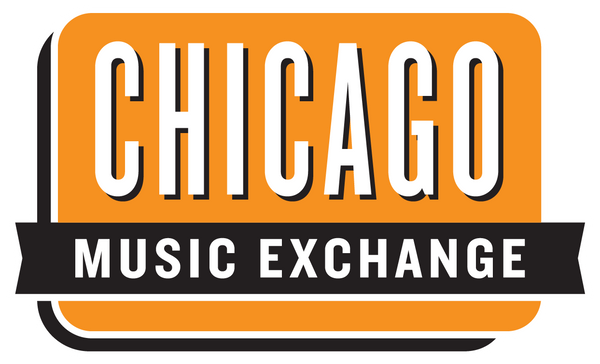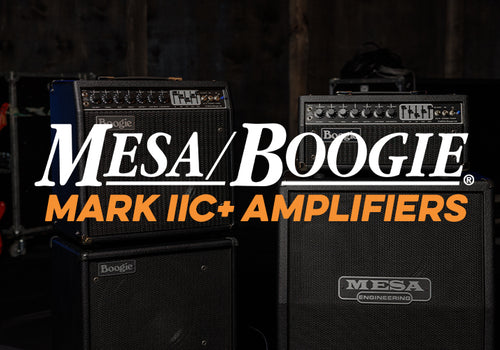The Truth About True Bypass
TRUE BYPASS OR NOT?!
It is sometimes crazy to think that when some of the first "guitar heroes" were paving the way for the electric guitar and its place in the sonic landscape of rock'n'roll, that there may have been only a handful of pedals at their disposal (and half of them weren't even designed for guitar!). Whenever I walk past the big glass case of pedals on the Chicago Music Exchange showroom floor, I always find myself hypnotized by the number of amazing pedals in existence. Still, I have to remind myself that these are "tools"– tools that are there to serve a purpose. That purpose may be to help you get the sound you hear in your head out into the world, to broaden your tonal palette for certain playing situations, or just to inspire you to sit down and write a new tune after a long streak of writer's block. We are fortunate to live in an age where there are never-ending pedal options. The only downside I can see is that it takes a bit of "homework" to learn what the differences are between these amazing pedals and why you would want one over the other for certain situations.
IS IT TRUE BYPASS?
One of the first questions that we hear when discussing a pedal is almost always: Is it True Bypass? But a better question may be: does the type of bypass matter more than how the pedal actually sounds? Or: Is true bypass better? To both of these questions, the answer is: It all depends!
With pedalboards becoming a must-have for many guitar players, the bypass mechanism of each pedal can affect your guitar's tone AND the way your pedals interact with each other (even when you are only using one at a time!).
First, let's talk about the various methods that builders and designers employ to bypass pedals. The two most common ways would be true bypass and buffered bypass.
Most boutique builders like Fulltone and JHS use a true bypass layout that employs a switch that mechanically takes the effect out of the equation. Companies like Boss and Ibanez typically use a buffered bypass system that aims to keep the output impedance the same for the dry signal as for the wet signal (there are exceptions, of course). Ok, now which one is better? Unfortunately, it isn't that simple.
I will just briefly explain the technical pros and cons of each and how to make them both work for you. Then we can get back to playing our guitars and making music, sound cool? Ok, here we go…
TRUE BYPASS
With the typical true bypass layout, your guitar's signal goes straight from the input jack to the output jack when the pedal is bypassed. Once you stomp on that switch, your signal goes to the input of the actual circuit while the output of the circuit goes to the output jack. Think of it kind of like that machine that changes the tracks for trains. The switch mechanically changes the path of your guitars signal back and forth between the circuit of the pedal and straight out to the output jack. So, why is this good? Well, if you are particularly fond of the sound that your guitar makes, you will appreciate that this is exactly what you will hear when the pedal is bypassed. Another issue that you will avoid with true bypass pedals is that they won't interfere with the sound of other pedals when bypassed.(If you have ever used a Fuzz Face with a Tube Screamer in front, you will know exactly what I mean!)
Now let's talk about the bad stuff. True bypass pedals typically employ a mechanical switch to carry out their mission. In some pedals, this switch can make a loud"pop"when you engage or disengage the effect. I have had some success with modding certain pedals to alleviate this. Unfortunately, there are several factors that can cause the popping noise, some of which are tough to track down and fix. The good news is that when you are playing with a drummer who is treats their kit like he or she caught them trying to break into the apartment, and you have a guitar player who thinks he is J Mascis...a little popping sound is going to be scant heard.
Another con of true bypass pedals comes into play when using multiple true bypass pedals in your chain. Most of us have heard the old"no cables longer than 20ft" rule, but some may not understand why this is. To avoid getting overly"nerdy",suffice it to say that the longer the path from the guitar pickups to the amp, the more signal loss you will suffer. When a true bypass pedal is disengaged, this basically lengthens that path. Even if the cable going from your guitar to your pedal board is 8ft and the cable going from your pedal board to your amp is 8ft, you still have to add the length of wire that is inside each pedal to your total cable length. While 3 or 4 pedals is certainly no big deal, from the pics of some of the pedal boards that you guys post on our Facebook wall, I would say some of you guys and gals might be running into a little bit of "tone loss" to say the least(although,I am impressed)!
BUFFERED BYPASS
Now let's talk about the buffered bypass pedals. This method still seems to be the norm for Boss and Ibanez pedals. In fact, these pedals are actually celebrated for having rather nice sounding buffers that many players just keep bypassed in their chain to avoid buying a stand alone buffer pedal. These bypass methods are a little more intricate. They usually involve transistors that do the circuit routing involved. Unlike true bypass pedals, buffered bypass pedals will not pass signal (even bypassed) without a power source connected. What is meant by"buffer"is that there is a small preamplifier built into the pedal that converts the impedance of the input signal into another impedance that might be a bit more stable for super long cable runs and such.
When a pedal is buffer bypassed, the actual buffer itself is usually not bypassed when the pedal is off. Why is this a good idea? Well, remember that "no cable longer than 20ft" rule? With a buffer in your signal chain, we can do what guitar players love to do most...ignore the rules! The buffer will allow you to run super long cables and suffer very little (if any) tone loss! You can also run as many cables as you'd like with no loss in tone or volume. Kiss that whole"popping"nonsense goodbye! Buffer bypass pedals usually have a soft latching switch that tells the transistors when to do their job, and they can do this silently. Now comes the big question: Why would anyone ever want a true bypass pedal when a buffered bypass pedal fixes all of these problems?
Well, since a buffer is a lot like a preamp, it has a tendency to slightly change the sound of your guitar. How much is "slightly" and just what kind of "change" are we talking about? It depends on the pedal. Typically, you can expect to get a little bit brighter of a sound with a slight volume boost. This can be great if your guitar has pickups that are a little on the dark side. It can also make a rather bright sounding Big Muff sound like killer bees have somehow built a nest inside the pedal. Some buffered bypass pedals change your tone more than others.
Buffered bypass pedals can also affect the sound and behavior of other pedals that are later in the signal chain. For instance, a Fuzz Face has the hidden feature of cleaning up with your guitar's volume knob and turning into a really amazing sounding clean boost. This happens because your guitar's pickup impedance affects the circuitry and changes with the resistance of your volume pot.
When you run into a buffered bypass pedal like a Tube Screamer, the Screamer's buffer converts your guitar's impedance (usually a high impedance) and turns it into a lower impedance. Your Fuzz Face no longer sees the changing impedance when you roll your guitar's volume knob up and down. It only sees the constant impedance that your Tube Screamer's buffer is dishing out…even when it is bypassed. These kinds of anomalies can occur in different ways with different pedals.
WHEN & HOW TO TRUE BYPASS
So, we still don't know which bypass method is better, do we? Well, that is because one isn't better than the other. With all of these amazing new pedals coming out, and all of these timeless classics resurfacing on websites like Reverb.com, we have to find a way to make them all play nice with each other. Even with all of this information, there's no right or wrong answer when it comes to true bypass vs buffered bypass. The best course of action in getting the best sound out of your pedals is to experiment with their placement and see what sounds the best to you.While there really isn't a right or wrong way to hook everything up, there are a couple of things you can do to minimize the"cons"and magnify the"pros"of your setup:
1. Find out which pedals are true bypass and which ones are buffered bypass.
2. Keep your buffered pedals toward the end of your signal chain to minimize the tone loss that comes from running long cables with a lot of pedals.
3. Try keeping your fuzzes and dirt pedals (the ones that you roll your volume down with) towards the beginning of your chain while trying your best to not let buffered pedals get in front of them.
4. If you are running all true bypass pedals, keep your cable length as short as possible.
5. If you are experiencing the dreaded"bypass pops", move the offending pedal around in your signal chain, perhaps after a buffered pedal or before one.
Ok, now that I have written a short novel on the topic, I think it is time I go grab a guitar and some pedals and space out for a while.
SHOP PEDALS AND EFFECTS
Related Posts
Mesa/Boogie | Mark IIC+ Amplifiers
A Legend Returns! Mesa/Boogie’s Mark IIC+ Amplifiers are back and better than ever. Whether you’re after the iconic Head or the portable 1x12 Combo, these amps deliver the vintage Boogie...
Read moreDownload the CME App
Discover the ultimate shopping experience with the Chicago Music Exchange Mobile App! Explore our unparalleled collection of over 14,000 guitars, amps, synthesizers, drums, microphones, and accessories—all at your fingertips. Stay...
Read moreIntroducing | Hiwatt & WEM Amplifiers
Unleash the sound of rock history with Hiwatt and WEM amplifiers at Chicago Music Exchange! From the bold clarity of Hiwatt, a cornerstone of classic British rock favored by legends...
Read more


